Understanding Botox: The Basics
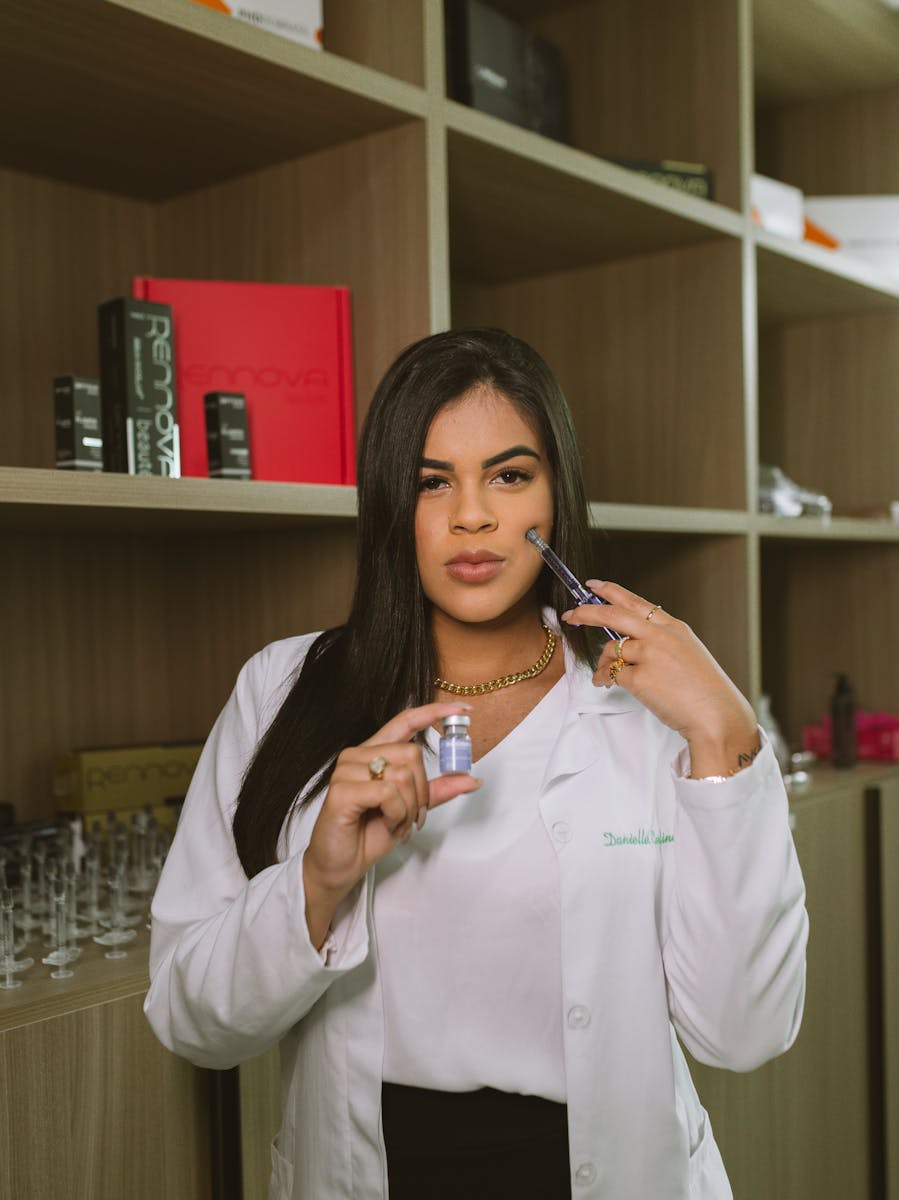
Botox, a cornerstone of modern aesthetic and medical practice, is a purified form of botulinum toxin type A, derived from the bacterium Clostridium botulinum. This naturally occurring neurotoxin, when carefully administered, offers a range of therapeutic and cosmetic benefits by temporarily modulating nerve signals in specific muscles. Injected directly into the muscle,
Botox blocks the release of acetylcholine, the neurotransmitter responsible for triggering muscle contractions. This targeted interruption induces a temporary muscle relaxation, softening the appearance of overlying wrinkles and lines or providing relief from certain medical conditions involving muscle overactivity.
Cosmetic dermatology utilizes Botox primarily to address the visible signs of aging, particularly dynamic wrinkles caused by repeated muscle contractions over time. These wrinkles, most prominent in expressive areas like the forehead (frontalis muscle), around the eyes (orbicularis oculi), and between the eyebrows (glabella/corrugator and procerus muscles), can be significantly softened with Botox injections.
By reducing muscle activity in these areas, Botox smooths the overlying skin, creating a more youthful and refreshed appearance without the need for invasive surgery. The precise placement and dosage of Botox injections are crucial for achieving natural-looking results that enhance facial features without compromising expressiveness.
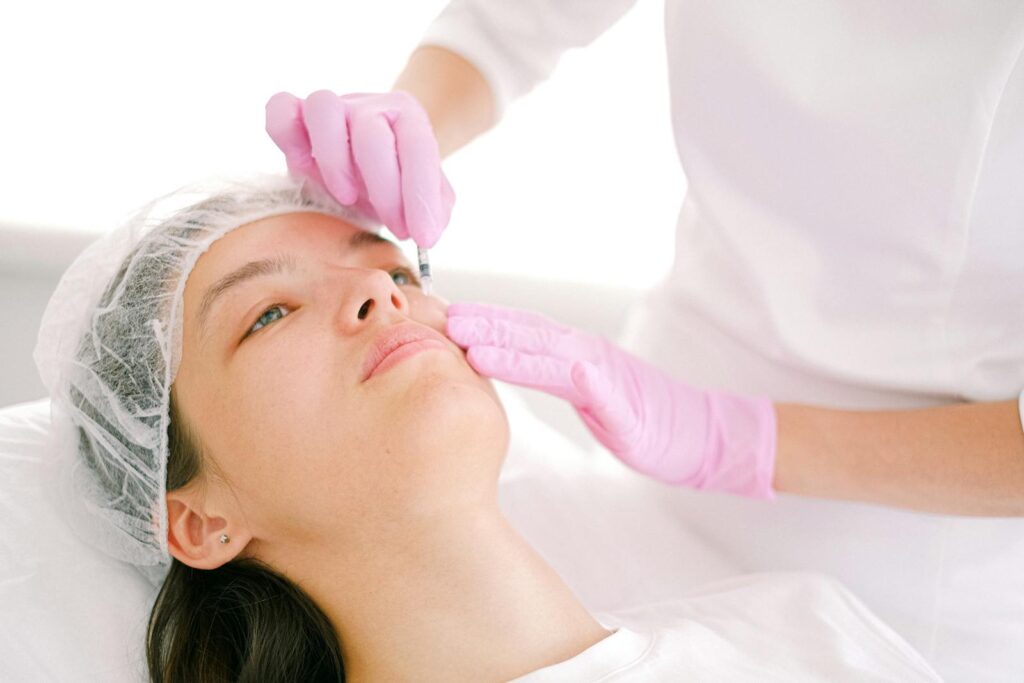
Beyond aesthetics, Botox plays a significant role in managing various medical conditions. Chronic migraines, characterized by debilitating headaches, can be effectively treated with Botox injections, which disrupt the pain pathways involved in migraine attacks. Botox also offers a solution for hyperhidrosis, a condition marked by excessive sweating, by inhibiting the nerve signals that stimulate sweat glands.
Furthermore, Botox is employed to treat a range of neuromuscular disorders, including cervical dystonia (spasmodic neck muscle contractions), blepharospasm (involuntary eyelid twitching), and strabismus (misaligned eyes). These diverse applications showcase Botox’s remarkable versatility and therapeutic potential.
Cosmetically, Botox is employed for a variety of enhancements beyond wrinkle reduction. It can be used to refine the jawline by relaxing the masseter muscle, improve the appearance of a “gummy smile” by reducing the elevation of the upper lip, and soften “bunny lines” on the sides of the nose. Botox can also create a non-surgical brow lift and rejuvenate the neck by addressing specific muscle groups in these areas. The adaptability of Botox allows practitioners to tailor treatments to individual needs and aesthetic goals, achieving comprehensive facial rejuvenation.
The minimally invasive nature of Botox injections, requiring minimal downtime, makes it a popular choice for both cosmetic and medical treatments. Visible improvements typically emerge within a few days, peaking around two weeks post-injection. The effects are temporary, lasting approximately three to six months, after which muscle activity gradually returns. Maintenance treatments are required to sustain the desired results, offering patients flexibility and control over their treatment plan.
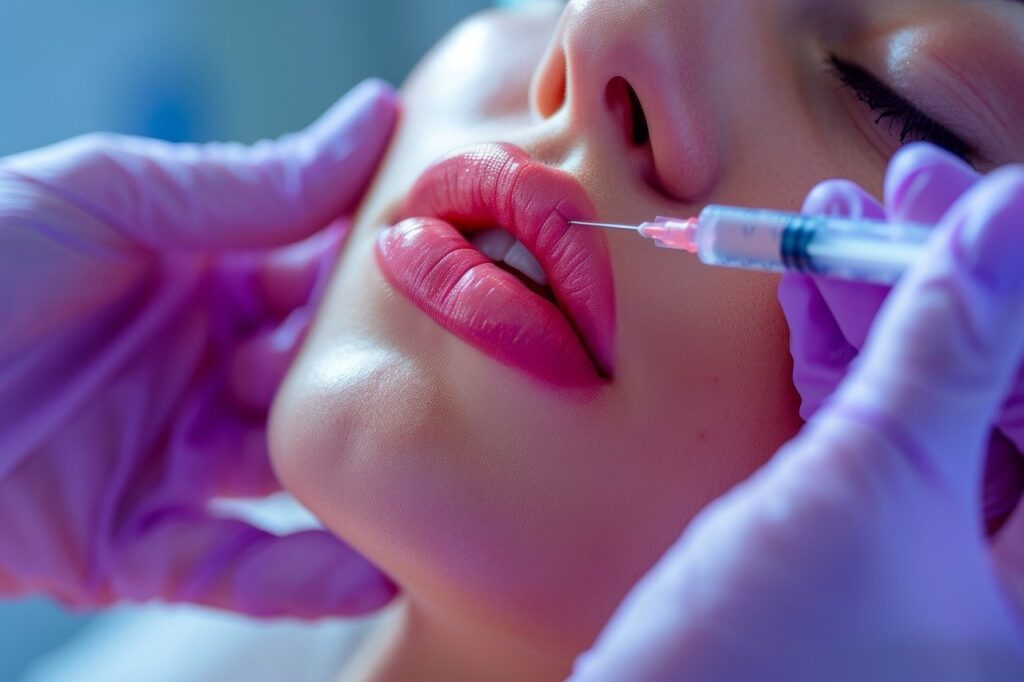
The safety profile of Botox is well-established when administered by qualified and experienced practitioners. While generally safe, potential side effects can include localized bruising, swelling, and temporary muscle weakness. Selecting a skilled practitioner is paramount for minimizing risks and ensuring optimal outcomes.
A thorough consultation, including a discussion of medical history and treatment expectations, is essential for informed decision-making. This careful selection process lays the foundation for a successful and satisfying Botox experience. The expertise of the injector significantly influences both the safety and efficacy of the treatment.
Choosing the Right Practitioner
Now that we’ve established a foundational understanding of Botox, its mechanisms, and its diverse applications, the crucial next step is selecting the right practitioner. This decision significantly impacts both the safety and efficacy of your treatment, directly influencing your aesthetic outcomes. Choosing a qualified injector isn’t simply about finding someone who offers the service; it’s about entrusting your face to a skilled professional who prioritizes your well-being and understands the nuances of facial anatomy.
A practitioner’s credentials and qualifications are paramount. Verification of board certification in a relevant medical specialty such as dermatology, plastic surgery, or ophthalmology is essential. Confirm their active registration with recognized medical regulatory bodies like the General Medical Council (GMC) in the UK or equivalent organizations in your respective region. These affiliations signify adherence to stringent medical standards and ethical practices, providing a baseline assurance of their competence and accountability.
Beyond these foundational credentials, prioritize practitioners who have pursued specialized training in cosmetic injectables. Look for certifications from reputable institutions that demonstrate advanced knowledge and proficiency in administering Botox. The field of aesthetic medicine is constantly evolving, so inquire about their commitment to continuing education and staying abreast of the latest techniques and advancements in Botox administration.
Experience is a critical factor in achieving superior results. An experienced injector possesses a nuanced understanding of facial anatomy, allowing them to tailor treatments to individual facial structures and desired outcomes. Years of practical experience translate into refined injection techniques and the ability to anticipate and manage potential complications.
Don’t hesitate to ask about the practitioner’s experience specifically with Botox, including the number of procedures performed and their familiarity with various injection techniques for different areas of the face. A portfolio of before-and-after photos can offer valuable insights into their aesthetic sensibilities and the results you can realistically expect.
The initial consultation is a cornerstone of a successful Botox treatment. This crucial meeting provides an opportunity for open communication and shared decision-making. A thorough consultation involves a detailed assessment of your facial anatomy, a discussion of your aesthetic goals, and a personalized treatment plan tailored to your specific needs. The practitioner should thoroughly explain the procedure, including potential risks, benefits, and expected outcomes. They should also inquire about your medical history, allergies, and any medications or supplements you are currently taking. This information is vital for minimizing potential complications and ensuring your safety.
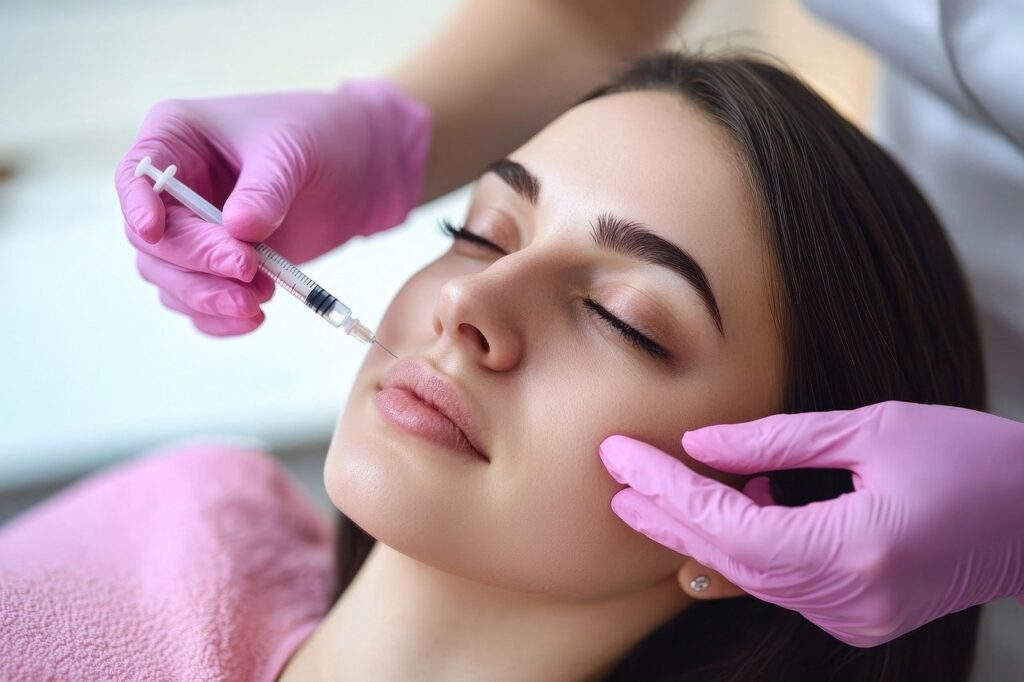
A skilled practitioner will actively listen to your concerns, answer your questions honestly, and empower you to make informed choices. This collaborative approach builds trust and ensures that your expectations align with the realistic possibilities of Botox. This comprehensive consultation sets the stage for a positive treatment experience and paves the way for optimal results. A well-informed patient is empowered to make sound decisions, which leads us to the next crucial phase: preparing for your Botox treatment.
Pre-Treatment Guidelines for Optimal Results
Once you’ve selected a qualified practitioner and discussed your aesthetic goals, the next crucial step towards a successful Botox treatment is meticulous preparation. This proactive approach optimizes the procedure’s effectiveness and minimizes potential complications. Preparation involves a comprehensive review of your current medications, adherence to a specific skincare regimen, and certain lifestyle adjustments.
Begin by providing your practitioner with a complete list of all medications and supplements you are currently taking, including over-the-counter drugs and herbal remedies. This detailed disclosure is essential because certain medications, such as blood thinners like aspirin, ibuprofen, and even some herbal supplements like St. John’s Wort, can increase the risk of bruising and bleeding at the injection sites.
To mitigate these risks, your practitioner may advise discontinuing these medications for a specified period, typically several days to a week, before your scheduled Botox appointment. Open communication with your practitioner regarding your medication history ensures they can tailor the treatment plan to your specific needs and minimize potential adverse reactions. This collaborative approach prioritizes your safety and maximizes the treatment’s efficacy.
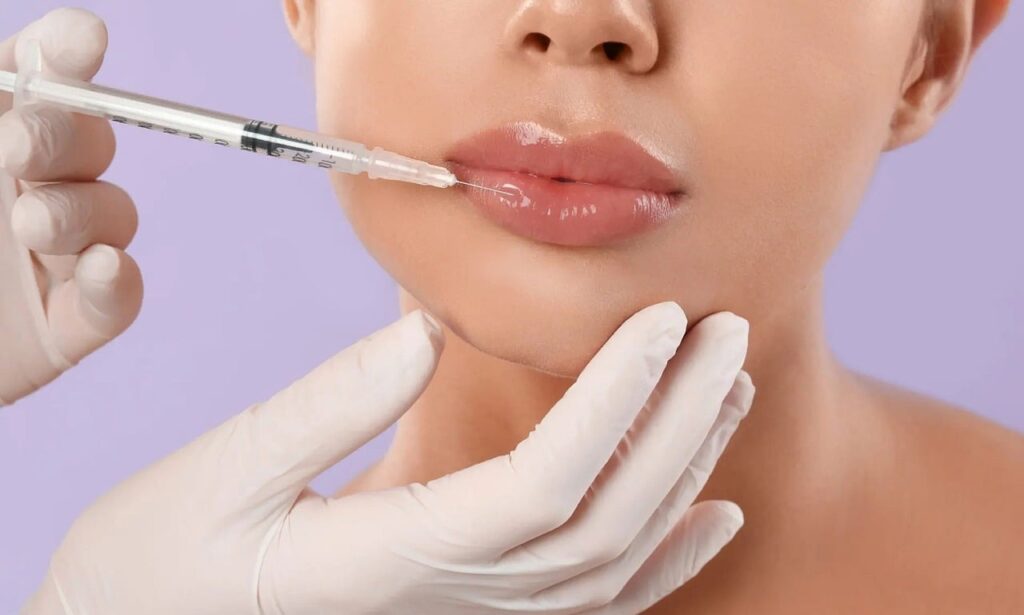
An appropriate skincare routine is another cornerstone of pre-Botox preparation. In the days leading up to your treatment, focus on gentle cleansing to remove makeup and impurities. Avoid harsh exfoliants, chemical peels, or microdermabrasion, as these can sensitize the skin and increase the risk of irritation post-injection. Maintaining optimal skin hydration is also paramount.
Well-hydrated skin is more supple, which can facilitate smoother injections and potentially enhance the absorption of the Botox. Furthermore, consistent sunscreen application with an SPF of 30 or higher is crucial. Protecting the treatment area from sun exposure minimizes the risk of pigmentation changes and can help prolong the effects of Botox.
Certain lifestyle adjustments further contribute to a successful Botox experience. Alcohol consumption can thin the blood, increasing the potential for bruising. Therefore, it’s advisable to abstain from alcohol for a few days prior to your treatment. Conversely, increasing your water intake is highly beneficial. Adequate hydration promotes skin elasticity, which can enhance the treatment’s effectiveness.
A balanced diet rich in antioxidants, vitamins, and minerals supports overall skin health and facilitates faster recovery. Minimizing sodium intake in the days before your appointment can help reduce fluid retention, which might otherwise obscure the refined contours achieved with Botox.
If you smoke, consider temporarily ceasing or significantly reducing your tobacco consumption in the weeks leading up to and following your Botox treatment. Smoking impairs the skin’s natural healing processes and collagen production, which can compromise the treatment’s aesthetic results. By prioritizing skin health and resilience, you maximize the efficacy and longevity of Botox.
These preparatory measures are not merely preludes to the procedure; they represent a commitment to long-term skin health. By approaching Botox treatment with a holistic mindset, you are laying the groundwork for optimal results and a seamless transition into post-treatment care. This conscientious preparation sets the stage for maximizing both the immediate and enduring benefits of Botox.
Post-Treatment Aftercare: Ensuring Longevity and Efficacy
Just as meticulous pre-treatment preparation sets the stage for successful Botox injections, the period immediately following your treatment is equally crucial for maximizing results and minimizing potential side effects. This post-treatment phase represents a bridge between the procedure itself and the long-term lifestyle adjustments that will sustain your newly refreshed appearance. It requires a delicate balance of mindful rest and proactive care.
For the first few hours after your injections, avoid touching, rubbing, or applying any pressure to the treated areas. This is essential to prevent the botulinum toxin from migrating to unintended muscles, which could result in temporary asymmetry or unwanted muscle weakness. Maintaining an upright posture during this initial period further helps the Botox settle precisely where it was injected.
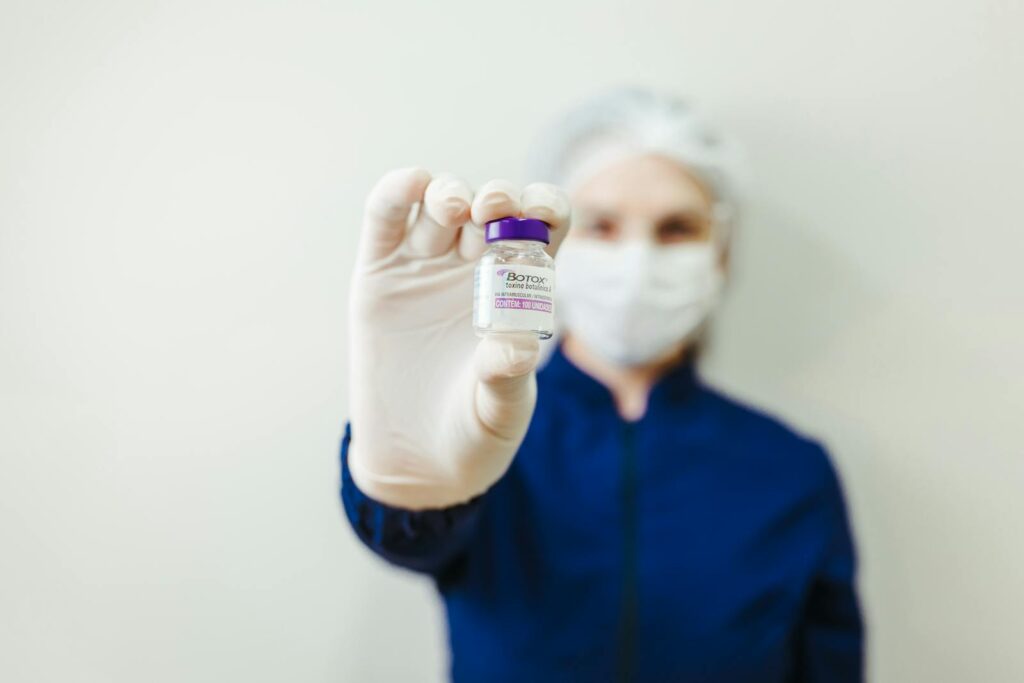
While you can resume most normal activities fairly quickly, avoid strenuous exercise or activities that cause excessive facial flushing for at least 24 hours. Increased blood flow can disperse the Botox, potentially diminishing its effectiveness in targeted areas. Gentle walks are permissible, but avoid anything that elevates your heart rate significantly.
Protecting your skin from the sun is paramount after Botox. UV exposure can degrade the collagen and elastin that contribute to youthful skin, potentially shortening the lifespan of your Botox results. Apply a broad-spectrum sunscreen with an SPF of 30 or higher before going outdoors, even on cloudy days. Consider supplementing this with protective clothing, such as a wide-brimmed hat and sunglasses, to create a comprehensive shield against harmful UV rays.
Your skincare routine also requires adjustments in the post-Botox period. Treat your skin with extra gentleness, using mild cleansers and lightweight moisturizers. Avoid harsh exfoliants, retinoids, and chemical peels for at least a week, as your skin may be temporarily more sensitive.
These potent skincare ingredients can be gradually reintroduced as your skin recovers, but prioritize gentle hydration and protection in the initial days. Maintaining optimal hydration levels through ample water intake supports overall skin health and complements the smoothing effects of Botox.
Finally, schedule a follow-up appointment with your practitioner within two weeks of your treatment. This allows them to assess the results, address any concerns you may have, and make minor adjustments if necessary. Open communication with your practitioner is key to ensuring your long-term satisfaction and achieving your aesthetic goals.
This post-treatment care, while seemingly simple, plays a vital role in setting the stage for the long-term lifestyle habits that will maintain and amplify your Botox results. These lifestyle changes, discussed further, represent an ongoing investment in your appearance and overall well-being.
Lifestyle Adjustments to Enhance Botox Outcomes
Beyond the immediate post-treatment care, long-term success with Botox hinges on a holistic approach to wellness. Careful attention to daily habits and lifestyle choices can significantly impact both the longevity and efficacy of the treatment, ensuring the desired aesthetic improvements are maintained and enhanced over time. This integrative approach involves cultivating beneficial practices that support the work of Botox from within, creating a synergistic effect between the treatment and the individual’s overall well-being.
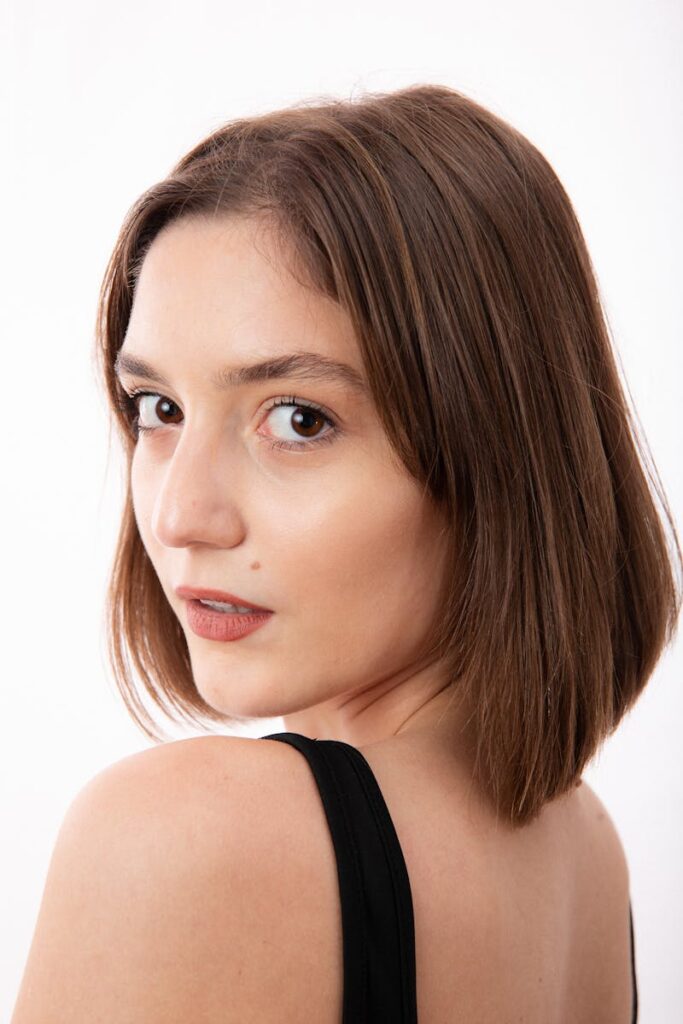
Stress, often an invisible yet potent force, can undermine the efficacy of Botox. Elevated stress levels trigger muscle tension, which can counteract the muscle-relaxing properties of the neurotoxin. Implementing stress-reduction strategies becomes crucial. Mindfulness exercises, deep breathing techniques, yoga, and meditation can promote relaxation and reduce muscle tension, allowing the Botox to work more effectively. Lowering stress not only complements the cosmetic benefits of Botox but also contributes to improved skin health, creating a virtuous cycle of wellness and enhanced appearance.
Nutritional choices play a vital role in supporting the long-term benefits of Botox. A balanced diet rich in nutrients provides the building blocks for healthy skin, enhancing its resilience and vibrancy. Prioritizing antioxidant-rich foods, such as fruits, vegetables, and nuts, combats free radical damage and supports collagen production, vital for maintaining skin elasticity and youthful structure. Adequate hydration is equally important. Consuming sufficient water keeps the skin plump and hydrated, which can extend the visibility of Botox results and contribute to a more youthful complexion.
Consistent and tailored skincare practices are paramount for preserving the enhancements achieved with Botox. A gentle skincare regimen is essential, using mild cleansers and moisturizers to nourish the skin without causing irritation to the treated areas. Protecting the skin from environmental aggressors, particularly the damaging effects of UV radiation, is crucial.
Daily application of broad-spectrum sunscreen with an SPF of 30 or higher is non-negotiable. Incorporating skincare products with hydrating and rejuvenating ingredients, such as hyaluronic acid and vitamin C, can further amplify the effects of Botox, promoting a healthy, radiant complexion.
These lifestyle adjustments—stress management, mindful nutrition, and a dedicated skincare routine—work in concert to optimize and prolong the results of Botox. They represent a proactive approach to beauty, extending the benefits of the treatment far beyond the initial injection.
By embracing these practices, individuals not only enhance the cosmetic outcomes but also invest in their overall well-being, fostering a sense of vitality that radiates from within. This shift in perspective transforms Botox from a singular treatment into a component of a broader commitment to self-care and long-term wellness. This holistic approach sets the stage for debunking common misconceptions surrounding Botox and its usage.
The Importance of Lifestyle Factors Post-Botox
Botox, a popular non-surgical cosmetic treatment, offers a relatively quick and effective way to reduce the appearance of wrinkles and fine lines. However, maximizing and sustaining these results requires more than just the injections themselves. A comprehensive approach that incorporates specific lifestyle adjustments plays a crucial role in optimizing and prolonging the benefits of Botox, contributing to a more youthful and refreshed appearance over time. These lifestyle factors primarily revolve around stress management, dietary adjustments, and a consistent skincare routine, each working synergistically to enhance the effects of the treatment.

Stress Management: Stress, often an unavoidable part of modern life, can significantly impact the efficacy and longevity of Botox. Elevated stress levels lead to increased muscle tension, potentially counteracting the muscle-relaxing properties of the neurotoxin. This means that the very muscles Botox is designed to relax may remain tense due to stress, diminishing the treatment’s effectiveness.
Therefore, incorporating stress-reducing practices into one’s daily routine becomes paramount. Techniques such as mindfulness meditation, deep breathing exercises, yoga, and regular physical activity can help manage stress levels, reducing muscle tension and allowing Botox to work optimally. Moreover, reducing stress has a positive cascading effect on overall well-being, improving sleep quality, boosting mood, and contributing to healthier skin, which further complements the aesthetic benefits of Botox.
Dietary Adjustments: The adage “you are what you eat” holds true, especially when it comes to skin health and the effectiveness of cosmetic treatments like Botox. A balanced and nutrient-rich diet provides the essential building blocks for healthy skin, supporting its elasticity, resilience, and overall vibrancy.
Antioxidant-rich foods, such as berries, leafy greens, and nuts, are particularly beneficial as they combat free radical damage, protecting the skin from premature aging and enhancing its natural glow. Adequate protein intake is also crucial for collagen production, a protein that provides structural support to the skin and maintains its youthful firmness.
Furthermore, proper hydration through sufficient water intake is vital. Hydrated skin is plumper and more elastic, which can prolong the visibility of Botox results and contribute to a smoother, more youthful complexion.
Continuous Skincare: A consistent and tailored skincare routine is fundamental to preserving and enhancing the effects of Botox. This involves adopting a gentle approach to skincare, using mild cleansers and moisturizers that nourish the skin without irritating the treated areas. Harsh exfoliants and products containing retinol or alpha-hydroxy acids should be avoided, especially in the initial days following the treatment, as they can increase skin sensitivity and potentially interfere with the Botox.
Protecting the skin from environmental damage, particularly sun exposure, is paramount. UV radiation can accelerate skin aging, contributing to wrinkles and diminishing the results of Botox. Daily application of a broad-spectrum sunscreen with an SPF of 30 or higher is essential, even on cloudy days, to shield the skin from harmful UV rays.
Incorporating skincare products containing hydrating and rejuvenating ingredients, like hyaluronic acid and vitamin C, can further complement the effects of Botox, promoting a healthier, more radiant complexion and extending the longevity of the treatment.
In conclusion, while Botox itself provides a significant aesthetic improvement, adopting a holistic approach that encompasses stress management, dietary adjustments, and a dedicated skincare regimen is crucial for maximizing and sustaining its benefits.
These lifestyle factors work synergistically to enhance the effects of Botox, promoting long-term skin health, and contributing to a more youthful and refreshed appearance that radiates from within. By embracing these practices, individuals not only optimize their cosmetic outcomes but also invest in their overall well-being, making Botox a part of a broader journey towards sustained health and beauty.
Debunking Common Botox Myths
While lifestyle choices play a significant role in optimizing Botox outcomes, it’s equally crucial to address common misconceptions surrounding the treatment. These misunderstandings can often overshadow the true potential and versatility of Botox, hindering informed decision-making.
One prevalent myth confines Botox solely to cosmetic wrinkle removal. This is a considerable oversimplification. Botox is a powerful neurotoxin with a wide range of therapeutic applications beyond aesthetics. It’s used to treat chronic migraines, manage excessive sweating (hyperhidrosis), control muscle spasms (like blepharospasm and cervical dystonia), and even address overactive bladder issues. These medical applications showcase the breadth of Botox’s therapeutic potential.
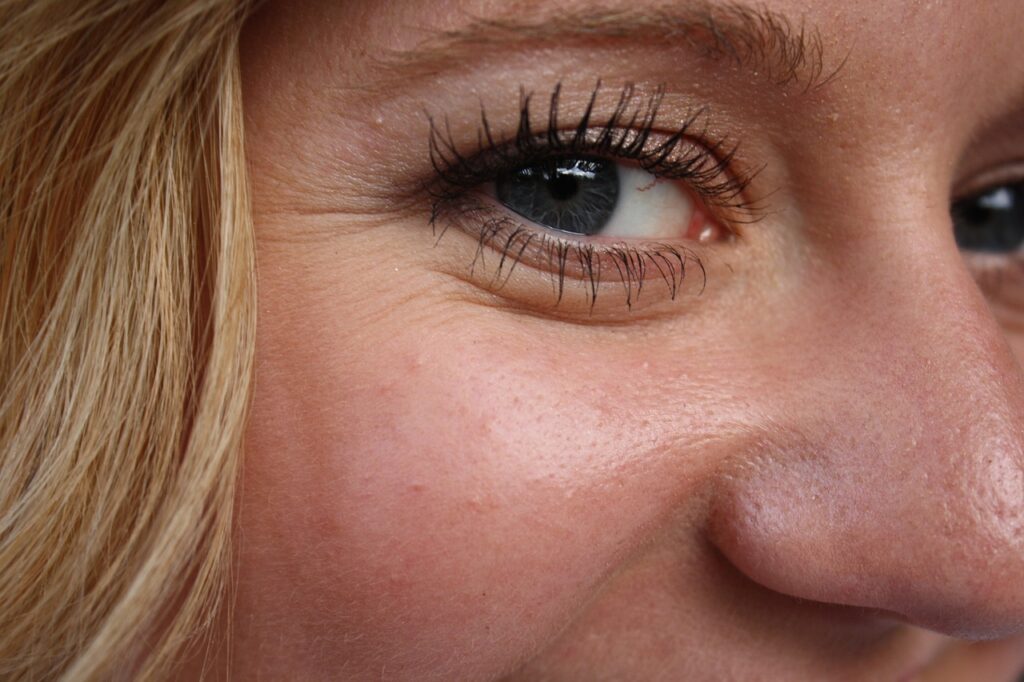
Safety concerns often arise due to Botox’s derivation from botulinum toxin. However, the Botox used in medical and cosmetic settings is highly purified and administered in precisely controlled dosages. In the hands of skilled, qualified practitioners, Botox treatments boast an excellent safety record, supported by extensive regulatory approvals and widespread clinical use. Adhering to established protocols and dosage guidelines minimizes the risk of complications.
The expectation of instantaneous and permanent results is another common misconception. Botox doesn’t work immediately; visible improvements typically emerge within a few days, reaching full effect after a week or two. Furthermore, the results are temporary, lasting three to four months on average, after which muscle activity gradually returns. Maintaining the desired aesthetic outcome requires regular maintenance treatments, an essential consideration for long-term Botox users.
The fear of a “frozen” or expressionless face is a pervasive myth. This unfortunate outcome is typically associated with improper administration by inexperienced injectors. Skilled practitioners utilize precise injection techniques to subtly relax targeted muscles while preserving natural facial expressions. This nuanced approach allows individuals to retain a full range of emotions and expressions while enjoying the smoothing effects of Botox.
The idea that Botox is addictive is a misconception rooted in a misunderstanding of its mechanism. Botox doesn’t cause physical dependence or withdrawal symptoms. Continued use is usually driven by patient satisfaction with the results and a desire to maintain a youthful appearance. This reflects informed personal choice rather than physiological addiction.
Another myth limits Botox to older individuals seeking to reverse aging signs. Preventative Botox use is increasing among younger adults in their twenties and thirties, who utilize it proactively to delay wrinkle formation and preserve a youthful appearance. This represents a shift in aesthetic philosophy towards early intervention and maintenance rather than solely reactive treatment.
Finally, apprehension about pain during Botox injections is often unfounded. The procedure involves very fine needles and is typically quick, minimizing discomfort. Many practitioners employ topical numbing agents or ice packs to further enhance patient comfort.
Most individuals find the procedure surprisingly quick and tolerable, easing anxieties surrounding needle-based treatments. Dispelling these common myths empowers individuals to make informed decisions based on factual information, maximizing the benefits and minimizing potential concerns associated with Botox.
Long-Term Botox Benefits and Maintenance
Dispelling myths about Botox naturally leads to a discussion of its long-term benefits, particularly when treatments are maintained consistently. Beyond the immediate gratification of wrinkle reduction, a commitment to regular Botox injections can yield significant and enduring improvements in skin health and overall appearance. This approach shifts the focus from merely addressing existing wrinkles to proactively preventing the formation of new ones.
Botox’s ability to intercept the development of dynamic wrinkles stems from its targeted action on the underlying muscles. By strategically relaxing the muscles responsible for repetitive facial expressions, Botox effectively reduces the creasing and folding of the overlying skin. This preventative effect is especially valuable for younger individuals in their late twenties and early thirties who are beginning to see the first signs of aging.
Early intervention with Botox can help to “re-educate” facial muscles, minimizing the ingrained expressions that deepen lines over time. This proactive approach not only softens existing lines but also establishes a foundation for smoother, more youthful-looking skin in the years to come.
Consistency is key to maximizing the long-term benefits of Botox. Regular treatments, typically scheduled every three to six months, ensure that the targeted muscles remain relaxed and prevent the re-emergence of wrinkles. This consistent approach allows for predictable outcomes and gradually conditions the muscles to maintain a more relaxed state, even between treatments. The cumulative effect of regular Botox injections can lead to a more refreshed and rejuvenated appearance that evolves gracefully over time.
The advantages of long-term Botox use extend beyond wrinkle prevention. By reducing repetitive muscle contractions, Botox also minimizes the mechanical stress placed on the skin. This, in turn, helps to preserve the skin’s natural elasticity and suppleness. Skin that experiences less dynamic movement tends to retain its firmness and youthful radiance for longer. This highlights Botox’s dual role: it acts as both a corrective treatment for existing wrinkles and a preventative measure to maintain skin health and vibrancy.

The psychological benefits of consistent Botox treatments should not be overlooked. Achieving and maintaining a desired aesthetic outcome can significantly boost self-confidence and overall well-being. Precisely administered Botox subtly enhances facial features while preserving natural expressiveness.
This allows individuals to enjoy the benefits of a more youthful appearance without the telltale signs of a “frozen” face. The resulting confidence boost can have a positive impact on various aspects of life, enhancing social interactions and promoting a greater sense of self-assuredness.
Periodic touch-up sessions are an essential component of long-term Botox maintenance. These appointments provide an opportunity for practitioners to assess the effectiveness of previous treatments and make adjustments as needed. Facial anatomy and muscle activity can change over time, and regular touch-ups allow for personalized adjustments to ensure optimal results.
These sessions also provide a platform for open communication between the practitioner and the patient, fostering a collaborative approach to achieving and maintaining aesthetic goals. This ongoing dialogue allows for adjustments in treatment strategies to address any emerging concerns and ensure that the results continue to align with the individual’s evolving needs and preferences.
Integrating Botox treatments with a comprehensive skincare regimen further enhances long-term benefits. Protecting the skin from sun damage is particularly crucial, as UV exposure can accelerate the aging process and diminish the longevity of Botox results.
Daily use of broad-spectrum sunscreen with an SPF of 30 or higher, combined with protective measures like hats and sunglasses, is essential. A consistent skincare routine that includes gentle cleansers, hydrating moisturizers, and antioxidant-rich serums can further support skin health and complement the rejuvenating effects of Botox.
Beyond its immediate cosmetic impact, consistent Botox use offers a proactive strategy for maintaining a more youthful appearance over time. It addresses current aesthetic concerns while also working to prevent future signs of aging.
By relaxing dynamic muscles, Botox minimizes wrinkle formation and preserves skin elasticity. Regular touch-ups and a holistic approach to skincare further enhance and prolong these benefits, empowering individuals to achieve their long-term aesthetic goals and cultivate a sense of confidence that radiates from within.
Stay tuned to Info Feeders for essential tips on the dos and don’ts after Botox and much more!








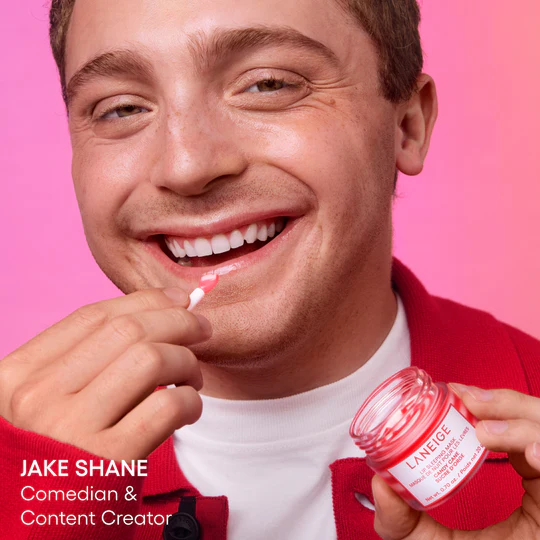

I precisely wished to say thanks once more. I am not sure what I would’ve implemented without those tactics discussed by you about this situation. It previously was an absolute distressing concern in my circumstances, but being able to see the very professional strategy you treated it took me to leap with joy. I am thankful for the guidance and in addition wish you know what a powerful job you have been providing instructing the rest with the aid of a web site. I am sure you have never come across any of us.
I’m really loving the theme/design of your site. Do you ever run into any web browser compatibility issues? A number of my blog audience have complained about my website not working correctly in Explorer but looks great in Opera. Do you have any ideas to help fix this problem?